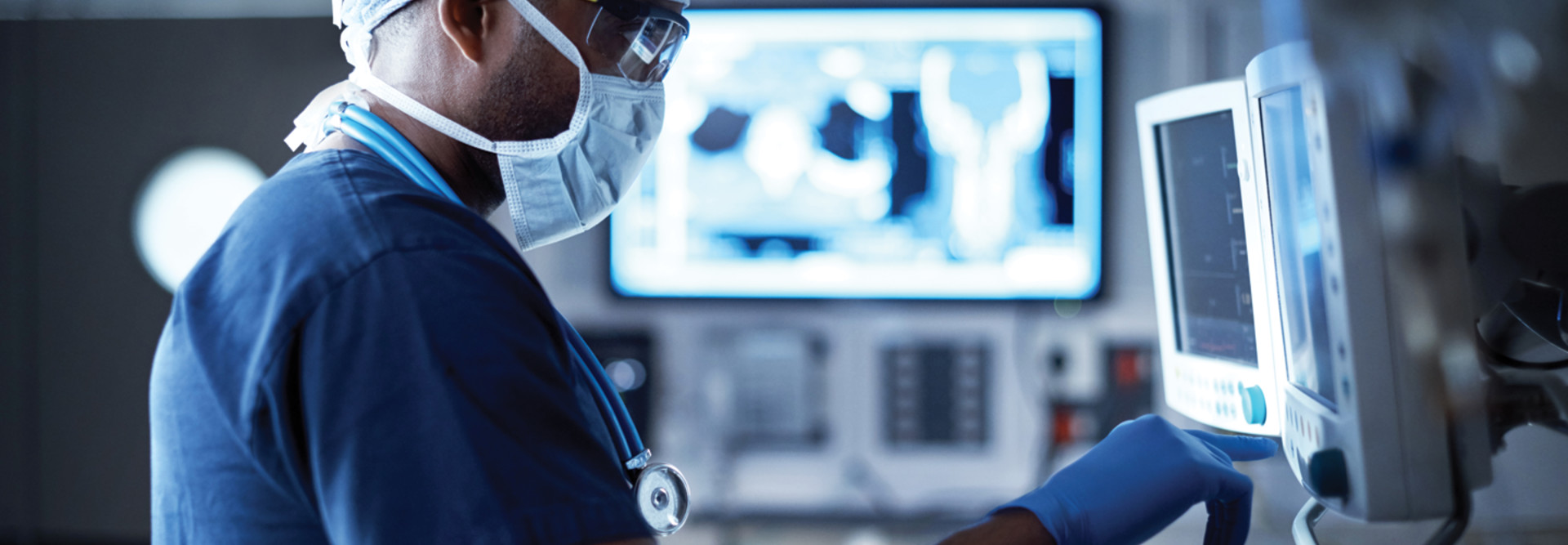How Predictive Analytics in Healthcare Is Changing Hospitals
As healthcare organizations strive to improve care, value and the overall patient experience, data is increasingly an essential ingredient to unlocking innovation and resources. In healthcare, analytics is used not only to measure and track outcomes but also to predict them.
So far, value-based care payment models have been a major driver of predictive analytics in healthcare, says Brian Murphy, director of research at Chilmark Research.
Value-based care is a newer payment model that has been “filled with unknowns and uncertainties and reluctance on the part of providers,” Murphy says. “A little bit of analytics and reporting can certainly help dispel some of that.”
Here’s what’s happening now with predictive analytics that could really push the needle forward in healthcare.
MORE FROM HEALTHTECH: Check out why provider strategies must make room for data.
What Is Predictive Analytics in Healthcare Used For?
Predictive analytics use has grown in primary care and bundled payment programs, says Murphy. In hospitals, it has found a home in the emergency department.
Montefiore Health System in New York is an accountable care organization, which means that the health system’s “incentives are aligned with patients. If the patient gets better, we get paid,” says Dr. Parsa Mirhaji, director of the Center for Health Data Innovations at the Albert Einstein College of Medicine and the Montefiore Medical Center. “If the patients don’t get better, we don’t get paid. If patients get worse because of what we do, we pay, which means we are at risk if patients don’t get better.”
Predictive analytics helps to keep patients healthy and reduce readmissions, which results in better outcomes.
In 2017, Montefiore launched an artificial intelligence platform called the Patient-centered Analytical Learning Machine, which is powered by Intel Xeon processors. PALM seeks to incorporate data to better manage emergency department patients.
“It really looks into all the data and learns about patients and understands them — what their vulnerabilities are, what their needs are — and in the future, coordinates their care,” says Mirhaji. “Once the hospital knows its patients based on all of this data, we can do all kinds of different things for them when they show up in the hospital.”
From PALM, Montefiore introduced an algorithm that sends an alert, called Accurate Prediction of Prolonged Ventilation, when patients are admitted into Montefiore’s emergency department. APPROVE helps to determine if patients are likely to need ventilation in the ICU.
“You can really improve your delivery of care, based on what you know about the patients, and you can share information across many applications and many different teams that are responsible for taking care of patients,” he said.
Use of Predictive Analytics in the Operating Room
Predictive analytics also helps healthcare systems make better use of their human and physical resources; for example, take Jefferson Health.
This Philadelphia healthcare system implemented Qlik Sense analytics and visualization solutions to capture clinical and financial data from electronic systems throughout the organization — including its new Epic electronic health record and its legacy EHR — to help plan for OR use.
“Every minute in the OR is very costly, so saving time saves money for both the hospital and the patient,” says Cara Martino, RN, enterprise business intelligence manager for Jefferson Health.
Jefferson has increased on-time starts by 25 percent, improved patient satisfaction and realized savings of nearly $300,000 a month. It also uses Qlik Sense with its EHR to aggregate and track opioid orders and provide clinicians with interactive reports to control overprescription of the addictive drugs.
Eighteen months ago, Augusta Health in Virginia implemented a sepsis surveillance system that uses predictive analytics for early identification of patients with sepsis. If a patient scores above a certain threshold, their nurse gets an alert that sounds different than what they’d hear if a patient pushed the nurse call button. “There’s no intervention by anyone. It goes directly to the nurse assigned to the patient,” says Penny Cooper, data scientist at Augusta Health.
Since the rollout, the surveillance system has saved 262 lives. “We have the capacity to do artificial intelligence, so why not do it? It’s better for patients. It’s better for the healthcare facility,” Cooper says.
MORE FROM HEALTHTECH: See which cloud architecture is right for your organization.
This Is Just the Beginning for Predictive Analytics
Mirhaji says that being able to handle an influx of data about patients — whether generated inside the healthcare setting or by the patient themselves through their own tracking devices and apps — is key to making predictive analytics work to its fullest capacity.
“We are sitting on a treasure trove of data that’s being generated by patients just by breathing,” Mirhaji says, so it makes perfect sense for a hospital system to think of data as being all-inclusive, as Google and Amazon do.
Data is on the mind of C-suite executives too. According to research conducted by the Deloitte Center for Health Solutions late last year, 84 percent of the 56 health system CIOs, CTOs and chief analytics executives surveyed said that analytics will be important to their organizational strategies over the next few years.
Also, a report published this year by the Society of Actuaries finds that both payers and providers are increasing — and have big expectations for — their use of predictive analytics.
“Predictive analytics obviously has architectural ramifications, and you need systems and architecture to process that,” Mirhaji adds. It’s “analytics that can consume these kinds of data service lines and workflow processes that are informed by a combination of care providers as well as automated systems collaborating with each other.”
Murphy expects the use of predictive analytics to grow as the technology continues to show results and as healthcare organizations become more accustomed to value-based payment systems. Right now, he says, predictive analytics is mostly seen in larger hospitals that have more money and are “in a better position to scrutinize what they do,” but that it could trickle down as use of the technology becomes widespread.
“It’s early days,” Murphy says. “The range of things that people are able to predict with existing tools is still relatively narrow. I think the upside here is still pretty significant.”









